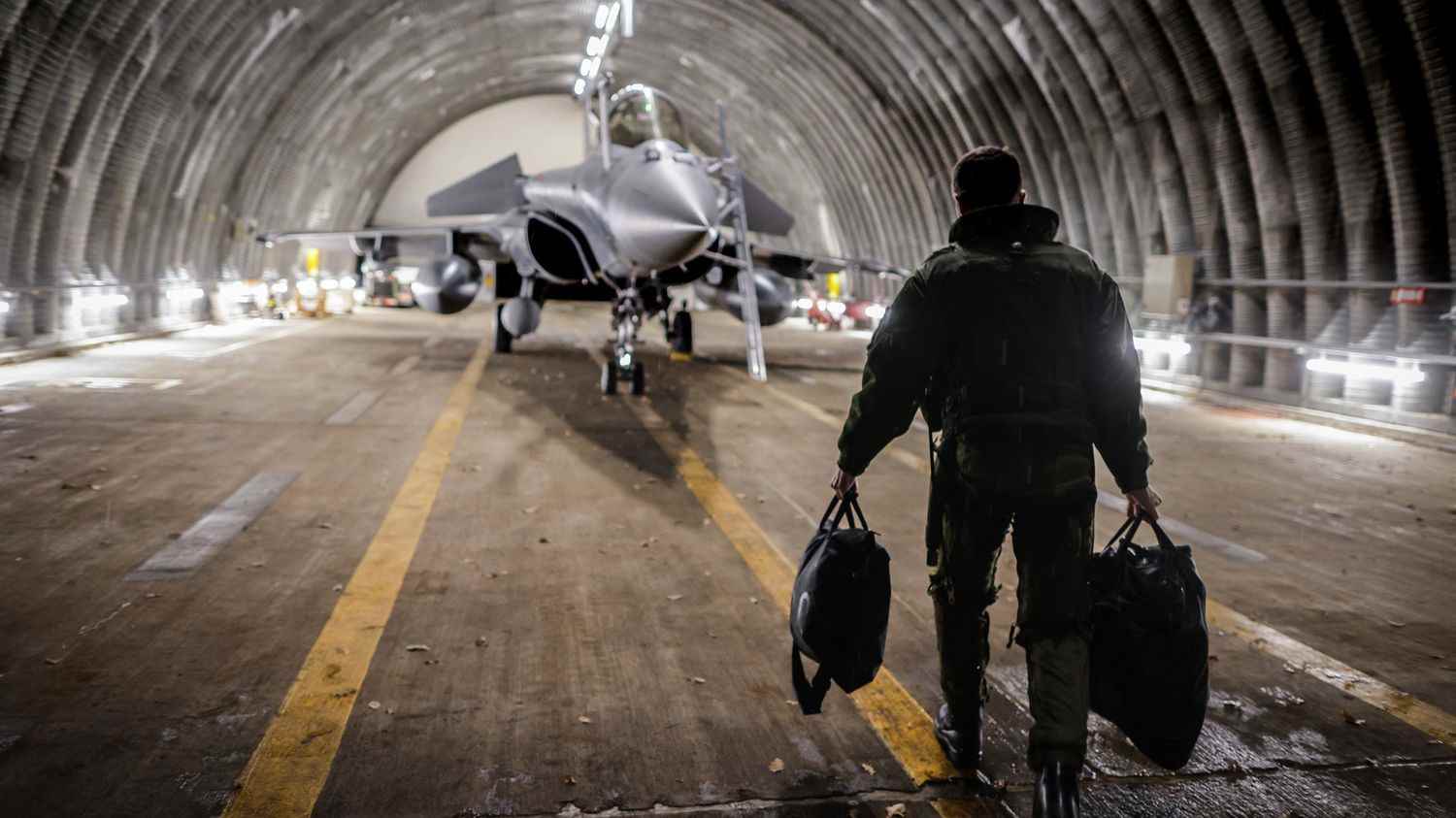Since the start of the war in Ukraine, two French Rafales have flown every day to monitor the airspace of Eastern Europe. franceinfo went to meet the pilots.
From Poland to Romania, the war in Ukraine is of particular concern to the countries of Eastern Europe. Since the beginning of the Russian offensive, the skies of the countries on the edge of Ukraine have been closely monitored, in particular that of Poland, a member country of NATO. France contributes to this surveillance of the airspace with the dispatch of Rafale from the Air Force. Since February 24 and the Russian invasion of Ukraine, these take-offs – systematically with two planes – are daily. At the moment, these planes leave from the Mont-de-Marsan base in the Landes. That of Saint-Dizier in Haute-Marne also participates in its missions. While waiting to take over from the Mont-de-Marsan base, franceinfo met these seasoned soldiers who are preparing.
>> War in Ukraine: follow our live
Before each takeoff of the fighter planes with gray fuselage, the teams do the “plane ride”to verify that the aircraft is “ready to go”. On February 24, 2022, six hours after the start of the Russian offensive, two Rafales from Mont-de-Marsan air base were already in the air, heading for NATO’s eastern border: “Our DNA is to be reactive and agile, declares Colonel Christophe, commander of the 4th squadron of Saint-Dizier, So in fact, we participated in it from the beginning of the conflict in Ukraine”.
“It’s a sky police mission. We are on the border with Ukraine and we make sure that the integrity of European territory is not called into question, which is the case until today. We have no particular incident to report since our participation in these missions.”
Colonel Christophe, commander of the 4th squadron of Saint-Dizierat franceinfo
Each departure is prepared the day before and on D-Day, after a final meeting, the pilots in khaki overalls sign the thick order book in the operations room. The necessary equipment is reviewed “like binoculars or a tablet, which are aids to navigation”, explain Commander Vincent who has patrolled Polish airspace several times. “We will have two or three little extra things, like food, because these are long missions.”
First aid kit, radio, sandwiches, cookies and some water. What to hold, during the mission which lasts more than six hours with several refuelings in full flight. “It’s not a mission that we do every day on French soil. It is special because it can be carried out in interallies, because it also requires a lot of preparation and coordination with the other nation”, says Commander Vincent.
“Remove Doubt”
Precision work for Captains Thomas and Charles, accustomed to theaters outside the Levant and the Sahel. “We organize the two planes in such a way as to be able to detect most of the aircraft which would evolve in the zone entrusted to us, explains Captain Thomas. A civil aircraft which crosses this zone and which, for example, has a flight plan which does not correspond to what was planned, well us, our objective is going to be to remove the doubt on this plane to be sure that it is not a maneuver of a country to test the reactivity of the defenses of the NATO countries, or that sort of thing.”
“It’s really flights triggered in relation to the war in Ukraine as a deterrent and not an escalator”, adds Captain Charles. For its part, NATO, which fears a forthcoming vast Russian offensive, will increase its military aid to Ukraine.
Meet the “sky police”, the French pilots who monitor NATO airspace in Europe: the report by Sandrine Etoa-Andegue
listen
